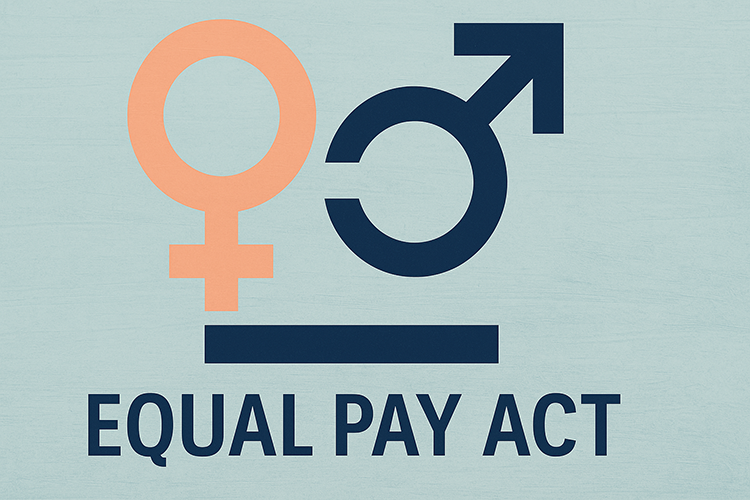Slovakia Prepares to Introduce Equal Pay Act from June 2026
The European Union’s Pay Transparency Directive, adopted in 2023, will require all member states to strengthen their rules on equal pay by 2026. The legislation aims to ensure that men and women receive equal pay for equal work, addressing persistent wage gaps through mandatory reporting, transparency rules, and enforcement mechanisms. With less than a year until the directive must be fully transposed, EU countries are at very different stages of readiness. A comparison across Central, Eastern, and Western Europe reveals diverse approaches, from building new systems to tightening already-established frameworks.
Slovakia is preparing for the most significant shift. A draft Equal Pay Act published in September 2025 is scheduled to take effect on 1 June 2026. It introduces the country’s first structured system of pay transparency, applying to both public and private sectors. Employers with over 100 employees will need to submit regular pay gap reports, and workers will gain the right to request information on average salaries of colleagues in comparable positions, broken down by gender. Gaps exceeding 5 per cent that remain unjustified for more than six months will trigger mandatory corrective actions. The Labour Inspectorate will enforce the law, with fines of up to €4,000 for non-compliance. The move is considered essential in Slovakia, which has one of the EU’s largest gender pay gaps.
Poland currently lacks a dedicated framework beyond general anti-discrimination provisions in the Labour Code. Proposals for pay transparency measures have circulated in recent years but have not advanced. To meet EU requirements, Poland will need to adopt legislation introducing structured reporting and salary transparency in recruitment. Trade unions and advocacy groups are pushing for stronger rules, but business associations have warned of administrative burdens for small and medium-sized enterprises. Debate is expected to intensify in 2026 as the transposition deadline approaches.
Czechia has taken some preparatory steps, with government discussions underway on draft legislation to transpose the directive. Current rules are limited to general equality principles under the Labour Code, leaving significant gaps on pay reporting. The proposed changes are expected to introduce employee rights to request pay data, mandatory reporting for companies above a 100-employee threshold, and sanctions for unjustified wage gaps. Analysts expect Czechia to align closely with the directive without adding stricter national requirements, in order to balance compliance with administrative feasibility for employers.
Hungary also relies primarily on existing anti-discrimination laws, with no specific pay reporting obligations in place. Experts note that Hungary has one of the widest gender pay gaps in the EU, making the directive’s transposition particularly significant. New legislation is expected to include rules on salary disclosure in job adverts and periodic gender pay gap reporting for large employers. Political debate has been limited so far, but implementation by 2026 will be mandatory.
Romania has had equality legislation since 2002, but enforcement has been weak and practical pay transparency tools are absent. To comply with the directive, the government is expected to introduce reporting obligations for larger employers and strengthen employee rights to request pay data. Advocacy groups are lobbying for robust enforcement, given Romania’s persistent structural inequalities in the labour market.
Germany already has a law in place, the Transparency in Wage Structures Act of 2017, which gives employees in firms with more than 200 staff the right to request pay information. However, its impact has been limited, as reporting is voluntary for many firms and enforcement mechanisms are weak. To meet EU standards, Germany will need to lower the reporting threshold to 100 employees and introduce stricter sanctions. Legal experts expect amendments in the coming months to close these gaps.
France, by contrast, has one of Europe’s strictest systems. Since 2018, companies with more than 50 employees have been required to publish an annual “Professional Equality Index,” which scores them on pay gaps, promotions, and gender representation. Non-compliant companies face fines of up to 1 per cent of payroll. France is expected to refine the index further to align with the EU directive, adding requirements such as salary range disclosure in job postings and more detailed reporting.
Taken together, these examples highlight the uneven landscape across Europe. Western countries such as France are largely refining existing systems, Germany is adapting its 2017 law to EU standards, while much of Central and Eastern Europe — including Slovakia, Poland, Czechia, Hungary, and Romania — is building new frameworks from the ground up.
The EU directive’s 2026 deadline leaves little time for governments to act. Employers across the continent will soon face tighter obligations, from publishing pay ranges in job advertisements to reporting gender pay gaps and correcting unjustified disparities. For workers, the reforms promise greater transparency and tools to challenge unfair practices.
While implementation challenges will differ, the underlying objective is clear: to move from declarations of equality toward measurable action. As the directive reshapes workplace rules across the EU, the coming years will test how effectively governments and employers can bridge the gap between principle and practice.









